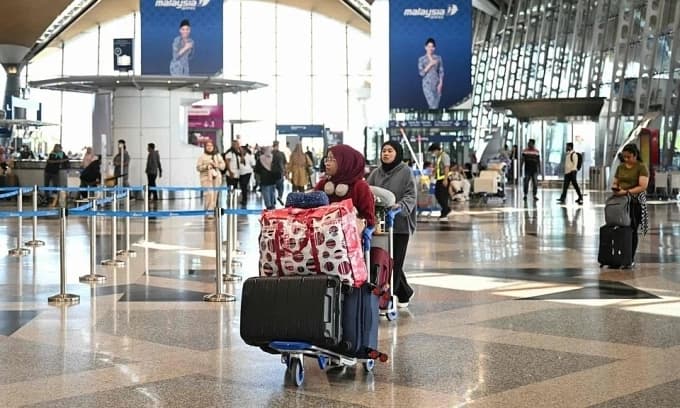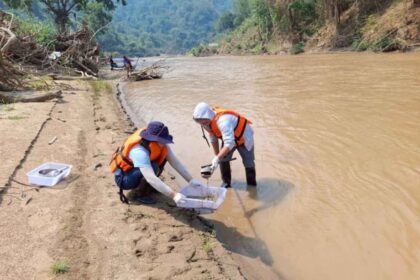Why Malaysia is moving to full biometric checks
Malaysia is preparing one of its most sweeping border upgrades in decades, centered on a new Foreign Digital Identity system that will register every foreign visitor with fingerprints, iris scans, and facial recognition. The plan is designed to stop illegal entry, close gaps that allowed document fraud, and tackle corruption at checkpoints. It pairs biometric identity with advance screening of airline passengers and wider use of automated gates, reducing reliance on manual checks and the discretion of individual officers.
- Why Malaysia is moving to full biometric checks
- What the Foreign Digital Identity will do
- Advance Passenger Screening and the new risk engine
- Automated gates, QR codes, and border modernization
- Technology partners and rollout timeline
- Corruption crackdowns and oversight measures
- Travel experience, privacy, and data protection
- Regional and global context
- Potential challenges and what to watch
- Key Points
The Foreign Digital Identity, or FDID, will create a unique official record for each visitor that links to a centralized biometric database. That record will accompany a traveler through every border touchpoint, making falsification more difficult and exit checks more consistent. Malaysian authorities say the approach will prevent repeated identity changes during a stay and help track entry and exit in a consistent way across airports, seaports, and land crossings.
Advance Passenger Screening will begin screening passenger information before flights depart for Malaysia, identifying travelers who may require extra scrutiny on arrival. A new risk engine will ingest that airline data and route it to national command centers for scientific analysis rather than ad hoc judgment at a counter. The government is also expanding automated gates, building in direct checks for overstayers and wanted persons, and adding body cameras and smart CCTV at counters to improve accountability.
Officials frame the changes as a joint response to surging travel, concerns about overtourism, and recent graft cases involving so called counter setting, where travelers allegedly paid to bypass proper checks. The upgrade aims to protect tourism and trade flows while raising integrity standards at the border.
What the Foreign Digital Identity will do
FDID is built to be the single source of truth for the identity of foreign visitors inside Malaysia’s border systems. A traveler will have one record linked to three core biometric identifiers, fingerprints, iris, and face, that enable fast, repeatable verification. The design makes tampering or duplicating identities difficult and provides border systems with a consistent way to track lawful entry and departure. FDID will sit inside Malaysia’s broader National Integrated Immigration System so that electronic gates, manual counters, and risk engines all reference the same identity record.
How biometrics verify identity
Biometric systems compare a live capture from a sensor, a fingerprint or facial image or an iris pattern, with data already stored in an identity record. Two kinds of checks are common. A one to one check confirms that the person presenting a passport matches the traveler enrolled for that document. A one to many check compares a new capture against many stored profiles to prevent duplicate enrollments under different names. Modern systems include liveness detection that resists spoofing attempts using photos, masks, or deepfake video. Accuracy continues to improve with better sensors and training data, while policies and audit trails help limit the rare cases of false matches.
Advance Passenger Screening and the new risk engine
Malaysia’s Advance Passenger Screening System, or APSS, is scheduled to start in phases with a first group of 10 airlines. It can screen passengers up to 72 hours before departure, checking against watchlists and using a risk evaluation engine to flag high risk cases for further review. The system is intended to work as a first layer of border control, shifting some decision making to pre travel checks to reduce surprises at the gate or counter.
Data from APSS will feed a Risk Assessment Engine operated in national command centers in Putrajaya, Sabah, and Sarawak. These centers will analyze information consistently, with decisions guided by standardized rules rather than individual judgment at a single counter. Travelers flagged as higher risk can be routed to manual inspection on arrival, while those who clear advance checks can move faster through automated lanes.
Automated gates, QR codes, and border modernization
Automated gates are set to become the default for many travelers. Malaysia already operates large numbers of electronic gates at airports and busy land crossings, and plans call for expansion at all main entry and exit points. The gates perform document authentication and biometric checks in seconds. If a person is on a watchlist, has overstayed, or is subject to an arrest warrant, the gate will stop the transaction and direct the traveler to an officer for action. Officials say this removes the opportunity to negotiate outcomes at the counter and improves traceability.
At airports
Malaysia has extended automated gate access to many nationalities and to long term pass holders, with eligibility now covering travelers from 63 countries at major checkpoints. Contract awards in recent years have added new gates and upgraded document readers, with vendors maintaining hardware and software across Kuala Lumpur International Airport and other hubs. Authorities have also announced a plan to bring QR based clearance to foreign visitors beginning in 2026 through the MyBorderPass mobile application. After registering passport data and face biometrics in the app, a traveler would present a QR code at clearance points. Officials say the process could cut per traveler clearance time to about five seconds compared with around 15 seconds at a biometric gate and far longer at manual desks, while also reducing the number of officers needed at posts.
At land and sea crossings
The busiest land gateway, the Johor Singapore Causeway, is a proving ground for new tools. Malaysia has piloted MyBorderPass for motorcyclists, registering tens of thousands of users. Plans also include additional automated gates at the Customs, Immigration, and Quarantine complex to reduce queues during peak commuting hours. Malaysia and Singapore are exploring a passport less QR code system for land checkpoints to speed flows for the hundreds of thousands who cross daily, alongside digitized cargo processes that cut dwell time for trucks.
Technology partners and rollout timeline
Malaysia’s border modernization is tied to a national platform, the National Integrated Immigration System, or NIISe. The project includes an Automated Biometric Identification System and electronic gates provided by NEC, using multi modal biometrics, fingerprints, iris, and face, to deliver high accuracy at scale. NEC’s biometric technologies have earned top rankings in benchmark tests by the United States National Institute of Standards and Technology, and the company has deployed large identity systems worldwide. The NIISe rollout targets 2026 for full operation at immigration checkpoints.
Other suppliers maintain critical equipment, including passport chip production, document personalization, and hundreds of automated gates already in service. Recent contract values exceed RM181 million, covering chips, documents, and maintenance. A separate feasibility study for a National Border Control System is looking at deeper integration of artificial intelligence and biometrics through a unified back end, often referred to as ABIS, to support Malaysia’s long term border strategy.
Key dates to watch
Advance Passenger Screening begins rolling out with a first group of airlines in October 2025, with expansion to more carriers in 2026. The Foreign Digital Identity is planned to go live by March 1, 2026, forming the single digital identity for foreign visitors. Authorities intend to expand automated gates at all main entry and exit points during the same window, and have discussed broader adoption of QR based clearance for eligible foreign nationals starting in 2026. Some elements, such as using automated gates for all exits and nationwide saturation at land borders, will phase in over multiple years.
Corruption crackdowns and oversight measures
Malaysia’s upgrade follows enforcement actions at the border. Investigations into counter setting have led to multiple arrests. The Home Ministry has disclosed that out of 27 individuals detained over alleged involvement, 18 were officers with the Malaysian Border Control and Protection Agency. The push for more automation is a response to those revelations. Automated gates reduce face to face handling of documents and payments, and advance screening moves risk decisions out of the immediate counter environment.
New oversight tools are part of the package. The Home Ministry plans to require body worn cameras for officers on duty and to monitor counters with smart CCTV that uses video analytics. The goal is to capture auditable interactions and detect suspicious behavior in real time. Command centers will have a clearer picture of flows across entry points, and audit logs from biometric systems will help investigators trace improper activity if it occurs.
Travel experience, privacy, and data protection
For most visitors, the new systems will change the experience at three moments, before departure, at arrival, and at exit. Ahead of travel, airlines will transmit passenger data so the risk engine can perform checks. At arrival, eligible travelers will proceed to automated gates that authenticate the passport, read a chip, and match a live face image or fingerprints to the stored identity. Those who have not enrolled, or who are flagged for additional screening, will visit a staffed counter. At exit, automated gates will again verify identity and confirm that a visitor’s stay is lawful. If there is an overstay or a warrant, the gate will halt the process and refer the person to immigration officers.
Many travelers already carry biometric passports. Malaysia was the first country to issue them, starting in 1998, and most of the world now uses similar documents. The passport chip stores a digital copy of a face image and sometimes fingerprints or iris data. Electronic border systems use public key infrastructure to confirm that the data was signed by a trusted authority, which makes cloning or tampering more difficult when inspection systems check signatures correctly. Protections such as Basic Access Control and Extended Access Control are designed to prevent unauthorized reading and support stronger encryption. Those measures help defend against skimming or eavesdropping, while the gates add liveness checks to counter spoofing of face images.
Safeguards and risks
Any biometric system must address privacy and data security. Questions include how long biometric records are retained, how data is shared with other agencies, and what remedies exist when a person is misidentified. Malaysia’s design includes centralized analysis through national command centers and an emphasis on consistent rules, which can improve transparency if activity is logged and auditable. At the same time, civil liberties groups often ask for clear legal safeguards, data minimization, and independent oversight. Those issues will draw attention as Malaysia adds more automation, especially if databases expand to new traveler categories or link with other systems.
Regional and global context
Malaysia’s shift aligns with a broader ASEAN agenda to build shared digital infrastructure. Leaders have discussed interoperable digital identity frameworks and secure data exchange under a regional digital economy plan. During a major regional summit in Kuala Lumpur, Malaysia used facial recognition as part of a layered security posture that also included explosive detection and counter drone tools. Senior police officials said the integrated systems proved effective during drills and live operations, with facial recognition used to verify authorized personnel at multiple access points.
Globally, electronic gates and face based travel identity are becoming standard at major airports. Industry analyses estimate tens of thousands of automated gates now in service, with many deployed at border control and self boarding. In Southeast Asia, projects in Indonesia, Bhutan, and Zimbabwe show how biometric gates can cut wait times for large traveler volumes while tightening checks for overstayers and wanted individuals. Malaysia’s large land border with Singapore adds a distinct challenge, with daily commuter flows that require fast, repeatable processes. QR code trials and expanded gate capacity aim to address those constraints while maintaining security.
Potential challenges and what to watch
Delivering a nationwide biometric border platform is complex. Multiple vendors must integrate hardware, sensors, and software across airports, ports, and land crossings. Systems need to stay available in peak travel periods, even if a server or a network link fails. That means careful attention to backup procedures and officer training when the automated route is not available. Accuracy is another focus. False matches and false non matches can frustrate travelers or cause unfair delays. Liveness detection and high quality sensors help, but standard operating procedures and clear appeal paths matter just as much.
Data governance will remain in the spotlight. Travelers and residents will expect clarity on what data is collected, who can access it, and how to challenge errors. Malaysia is also investing in a broader digital identity ecosystem, including MyDigital ID and national AI initiatives in its 2026 budget. These programs can support the border upgrade by improving identity assurance and analytics, but they also raise coordination questions about databases and access controls. Another area to watch is the interface between border security and humanitarian practice. Malaysia uses biometric registration for refugees through a separate system. Rights groups have raised concerns that vulnerable people could face risks if sensitive data spreads beyond its intended scope. Clear rules and limited use can reduce that risk.
Key Points
- Malaysia will register all foreign visitors with fingerprints, iris scans, and facial recognition under a new Foreign Digital Identity.
- The FDID creates a unique official record for each visitor and links to a centralized biometric database across airports, seaports, and land borders.
- An Advance Passenger Screening System will screen travelers up to 72 hours before departure and route data to a Risk Assessment Engine.
- National command centers in Putrajaya, Sabah, and Sarawak will analyze risk data to standardize decisions and reduce discretionary judgment at counters.
- Automated gates will expand at all main entry and exit points and will block the departure of overstayers and wanted individuals.
- Malaysia plans to extend QR based border clearance to eligible foreign travelers starting in 2026 via the MyBorderPass app.
- NEC will provide a national Automated Biometric Identification System and electronic gates under the NIISe program, targeting full operation in 2026.
- Recent contracts for passports, chips, and gate maintenance exceed RM181 million, supporting continued expansion of automated infrastructure.
- Anti graft measures include compulsory body cameras for officers and smart CCTV with video analytics at immigration counters.
- The Home Ministry reported that 18 of 27 people detained in a counter setting probe were border agency officers.
- Malaysia issued the world’s first biometric passports in 1998 and is now extending biometric checks to the entire visitor journey.
- Key risks include system downtime, data privacy, and rare misidentifications, which require strong governance, training, and audit trails.












